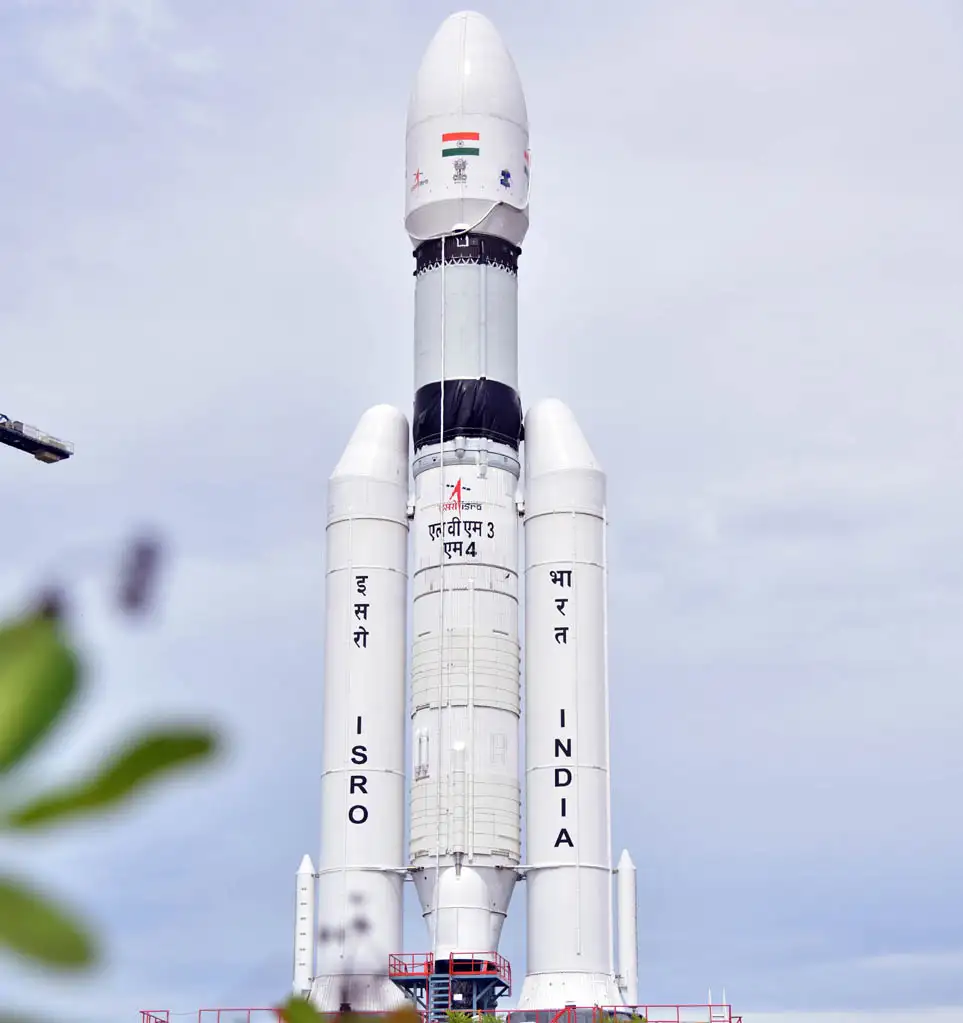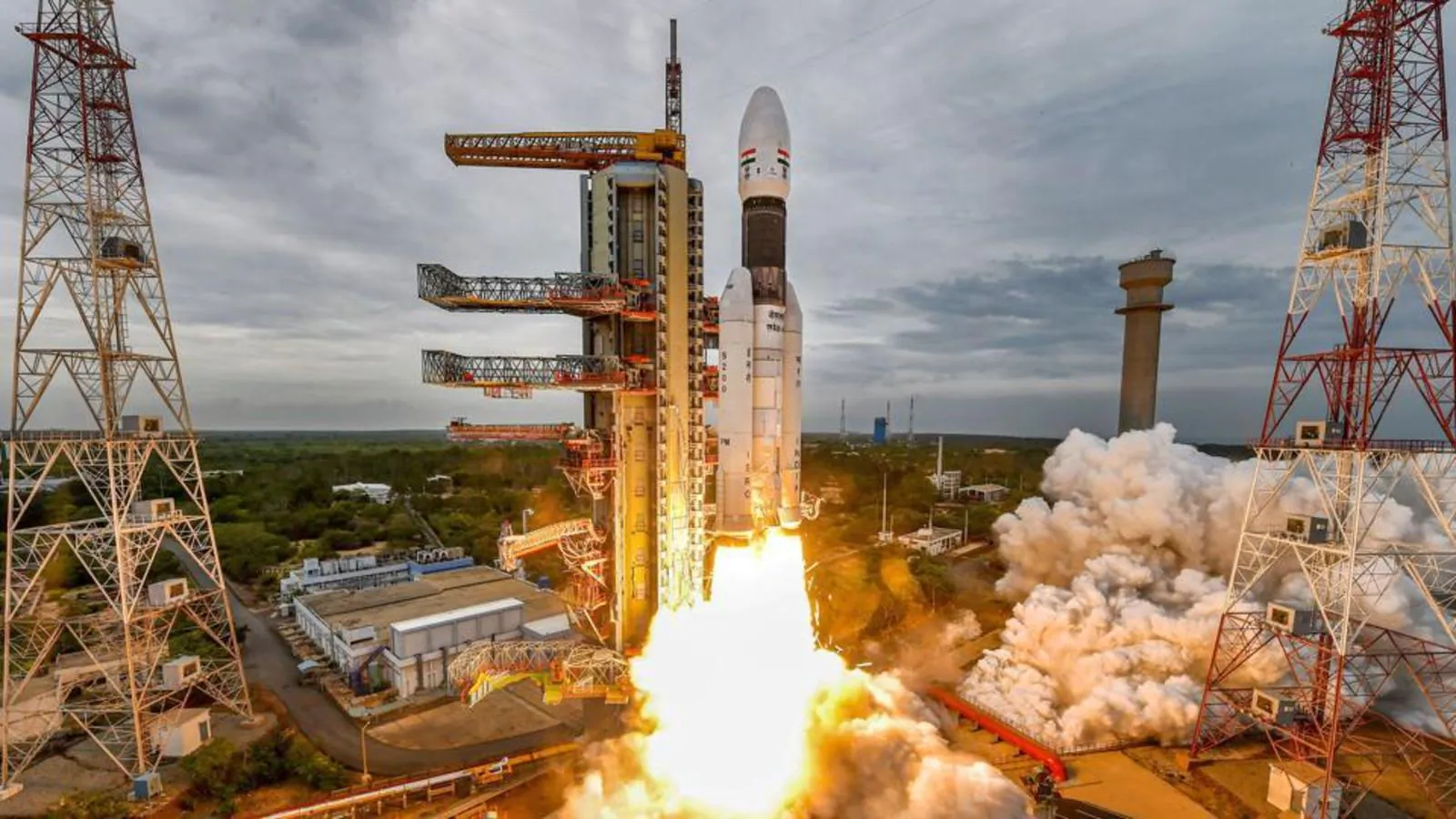India Achieves Success in Launching Chandrayaan-3: Unmanned Mission Sets Course for Lunar South Pole
In an impressive feat, India has successfully launched Chandrayaan-3, carrying an autonomous robot explorer bound for the southern region of Earth’s natural satellite. The mission is expected to span a duration of 14 days, with an estimated cost of approximately €67 million.
Upon achieving a controlled lunar landing, India will proudly join the exclusive league of nations that have accomplished this remarkable milestone: Russia, the United States, and China. It is worth noting that India had previously made an initial endeavor four years ago, which unfortunately resulted in loss of communication with the Earth mere moments before the Moon touchdown.
India’s Chandrayaan-3 mission embarked on its journey with the ambitious objective of accomplishing a lunar surface landing, a remarkable achievement thus far only attained by the United States, Russia, and China. Following its launch, the Chandrayaan-3 spacecraft will traverse the celestial expanse and reach the lunar orbit approximately one month later. The designated lander, Vikram, along with the accompanying rover, Pragyaan, are anticipated to touch down on the lunar surface on August 23, marking a significant milestone for India’s space exploration endeavors.
The main objectives of Chandrayaan-3 encompass various aspects of lunar exploration and scientific research. Here are the key objectives:
- Lunar Landing: The primary goal of Chandrayaan-3 is to achieve a successful soft landing of the lander on the lunar surface. This would contribute to India’s capability in landing and operating a spacecraft on the Moon.
- Lunar Surface Analysis: The lander and rover will conduct scientific investigations on the lunar surface, studying its geological composition, surface features, and other relevant parameters. This data will enhance our understanding of the Moon’s characteristics.
- Technology Demonstration: Chandrayaan-3 serves as a platform to showcase and test advanced technologies and capabilities required for future lunar missions. This includes testing landing and navigation systems, as well as conducting experiments to validate engineering and scientific concepts.
- SHAPE Payload: The propulsion module of Chandrayaan-3 carries the Spectro-polarimetry of Habitable Planet Earth (SHAPE) payload. SHAPE aims to analyze the light emitted from Earth to study its spectral and polarimetric properties. This research has implications for studying Earth’s atmosphere, climate, and habitability.
Overall, Chandrayaan-3 aims to advance our knowledge of the Moon, demonstrate technological prowess, and contribute to scientific research both on the lunar surface and from Earth’s perspective.
According to the statement provided, the main shortcoming observed in the previous Chandrayaan-2 mission was the presence of off-nominal conditions within the system. These conditions were not within the expected parameters, and as a result, the spacecraft faced challenges in effectively managing these deviations, leading to an unsuccessful landing attempt. It highlights the importance of addressing and mitigating off-nominal conditions to ensure a safe landing in future lunar missions.
In addition to its primary objective of lunar landing, Chandrayaan-3 has a comprehensive scientific agenda aimed at studying various aspects of the moon’s environment, history, geology, and resource potential. The mission is equipped with six payloads that will facilitate these investigations, including the study of lunar soil and capturing images of Earth from the lunar orbit.
Once successfully landed, Chandrayaan-3 will embark on a 14-day mission, equivalent to one Lunar day, during which it will carry out groundbreaking experiments utilizing the RAMBHA and ILSA payloads. These experiments will focus on analyzing the moon’s atmosphere and conducting subsurface investigations to gain insights into its mineral composition.
The lander, Vikram, will capture photographs of the rover, Pragyaan, as it deploys its instruments to study lunar seismic activity. Pragyaan will utilize laser beams to melt sections of the lunar surface, known as regolith, and analyze the gases emitted during this process, contributing to a deeper understanding of the moon’s composition.
Overall, Chandrayaan-3’s scientific endeavors aim to unravel the mysteries of the moon, providing valuable data on its geological features, potential resources, and other significant aspects that contribute to our understanding of Earth’s celestial neighbor.
India’s Chandrayaan-3 mission not only seeks to expand our knowledge of the lunar surface but also holds implications for potential human habitation in the future. According to S Somnath, the chief of ISRO, a location near the equator is considered more favorable for human settlement.
Somnath acknowledges the importance of factors such as the availability of water, temperature stability, and access to solar power for sustainable power generation. Considering these requirements, an equatorial location on the Moon may offer a more suitable environment for human beings to settle if the establishment of a human habitat becomes a reality.
It’s worth noting that the exploration of potential human habitation on the Moon is a complex and multifaceted topic, involving numerous considerations and challenges. The research and findings from missions like Chandrayaan-3 contribute to our understanding of the lunar environment and aid in the assessment of its potential for supporting future human activities.

Among the payloads onboard Chandrayaan-3, the Radio Anatomy of Moon Bound Hypersensitive Ionosphere and Atmosphere (RAMBHA) will focus on measuring the density of charged particles in the vicinity of the lunar surface, studying their variations over time.
Another payload, the Alpha Particle X-Ray Spectrometer (APXS), will play a crucial role in analyzing the chemical composition of the moon’s surface, providing insights into its mineralogical makeup. The Laser-Induced Breakdown Spectroscope (LIBS) payload will complement this by determining the elemental composition of lunar soil.
To mitigate the extreme frigid temperatures that prevail during the moon’s nightfall, Chandrayaan-3 will strategically direct its lunar lander towards the moon’s south pole, specifically at 70 degrees latitude, before the onset of night. This positioning allows for better temperature management and operational efficiency during the mission.
By employing these payloads and implementing strategic measures, Chandrayaan-3 aims to gather valuable data on the lunar environment, contributing to our understanding of the moon’s atmosphere, surface composition, and potential for future exploration and habitation.
The Chandrayaan-3 spacecraft is scheduled to land on the lunar surface at 5:47 pm on August 23. This significant moment will mark a crucial milestone in India’s lunar exploration endeavors and contribute to our understanding of the moon’s surface and its potential for scientific research and future missions.

